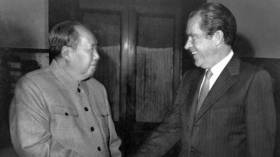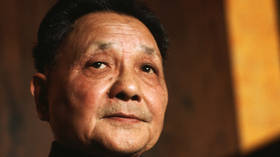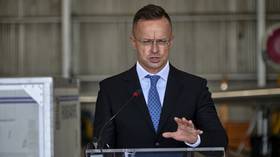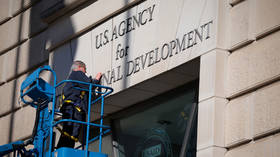Lessons to be learned from 1972 Nixon-Mao meeting

This week marks the 50th anniversary of a meeting that culminated in one of the biggest, and perhaps most consequential, ‘political earthquakes’ of the 20th century.
Despite the United States and China being fierce Cold War political adversaries,on February 21, 1972, US President Richard Nixon arrived in Beijing for a week-long visit and met with the aging Mao Zedong. The meeting effectively changed the US-China relationship forever and gave political momentum to forces of openness and change in Beijing.
Yet, five decades on, it goes without saying that the world is a very different place, and more so China is a very different place. The thawing of relations has been replaced by frosty exchanges in what many call a new Cold War. As uncertainty and tensions escalate between Washington and Beijing, arguably never has the lessons of this single meeting, one which would change the course of history, been more significant for peace and hope between the two superpowers.
Why did the 1971 meeting happen
Prior to Nixon’s visit, China was in a state of effective Cold War with the West, but also simultaneously, against the Soviet Union. Mao Zedong's revolutionary approach to the leadership of China advocated a worldwide struggle for socialism against imperialism. But by the 1970s, at the end of his own life, forces of change were creeping in; China's economy and prospects had suffered deeply under his catastrophic Great Leap Forward and Cultural Revolution campaigns, whilst Moscow was perceived as an imminent threat.
At the same time, President Nixon was working to reorient America’s foreign policy. Moving away from the explicit confrontation that marked the 1960s, Nixon began to lay the foundations of shifting the US into a period of ‘détente’ with its adversaries. Later in 1972, he would also visit Moscow and meet with the Soviet leader Leonid Brezhnev, whilst also making preparations to phase out and withdraw from the Vietnam War. But Nixon also saw the opportunity to exploit a wedge between Moscow and Beijing,which had been in a state of intra-communist rivalry owing to the Sino-Soviet split. With that in mind, the American president saw a strategic opportunity in visiting China, seeking to expand “American influence” and, in turn, bring Beijing into their sphere of influence.
And he did. The Nixon-Mao meeting would break the ice, on a huge scale. It led to a domino effect of growing engagement between the US and China which, as I wrote about recently, laid the groundwork for Deng Xiaoping's ‘reform and opening up’ following the death of Mao in 1976. It transformed America and China from adversaries into effective diplomatic partners who would establish relations, with the US shifting its recognition from the Republic of China in Taiwan to the People's Republic of China in Beijing. This all opened the doorway for China's integration into the global economy. As a result, it is no wonder that the meeting was heralded as an important milestone in ties between the two countries. It embodied hope, optimism, peace, and progress, showing how ideological divides can be readily overcome and common interests established.
The world has changed
However, 50 years later, some regard that historic visit as a failure in the sense of embracing a China that is portrayed as hostile and adversarial to the interests and dominance of the United States.
That's how then-Secretary of State Mike Pompeo sought to frame it in his 2020 speech hosted deliberately at the Richard Nixon presidential library in California, whereby he set out to try and reset US foreign policy with China and bring the ‘Mao-Nixon era’ of positive engagement to an end. In doing so, he lambasted the open approach it advocated as a failure, whipped up fear, and ultimately advocated confrontation and competition against Beijing as the new normal, questioning “What do the American people have to show now 50 years on from engagement with China?”
Unfortunately, the Biden administration would embrace that foreign policy legacy, signifying a changed geopolitical context in how whilst a weak and impoverished China was embraced, the rise of China as a political, economic, and military power globally, which did not change to suit America’s political vision, is now rendered a mistake and a misdeed.
This Nixon-Mao meeting is now looked back on as a story of how America's relationship with China transformed as one of opportunity, to threat. But those who have been banging the drums of Cold War and Yellow Peril ought to understand similarly that the clock cannot be turned back. Many have hoped, perhaps naively, that the huge economic relationship built up between the two can be foregone and that China can be banished back to the old days of Maoist era isolation and poverty, dreaming of a time when America was confident with unparalleled economic and military dominance.
But it cannot. Whilst the power dynamics between the US and China are one thing, it is also telling how the 1972 meeting has become a reflective scapegoat for America’s own failures, such as how the woes of neoliberal capitalism and the death of the American dream are projected onto a legacy of “engagement with China” – as if all 50 years of it have been a failure and zero-sum loss that never delivered any benefit, as Pompeo claims.
These assumptions have been as false as they are dangerous. Whilst geopolitical frictions have escalated into a competition across multiple fronts, it remains true that there are many lessons to be learnt from that fateful day 50 years ago, and where both countries started off ought never to be forgotten, but accepted. A starting point should be built on, worked on, but not destroyed.
The statements, views and opinions expressed in this column are solely those of the author and do not necessarily represent those of RT.















